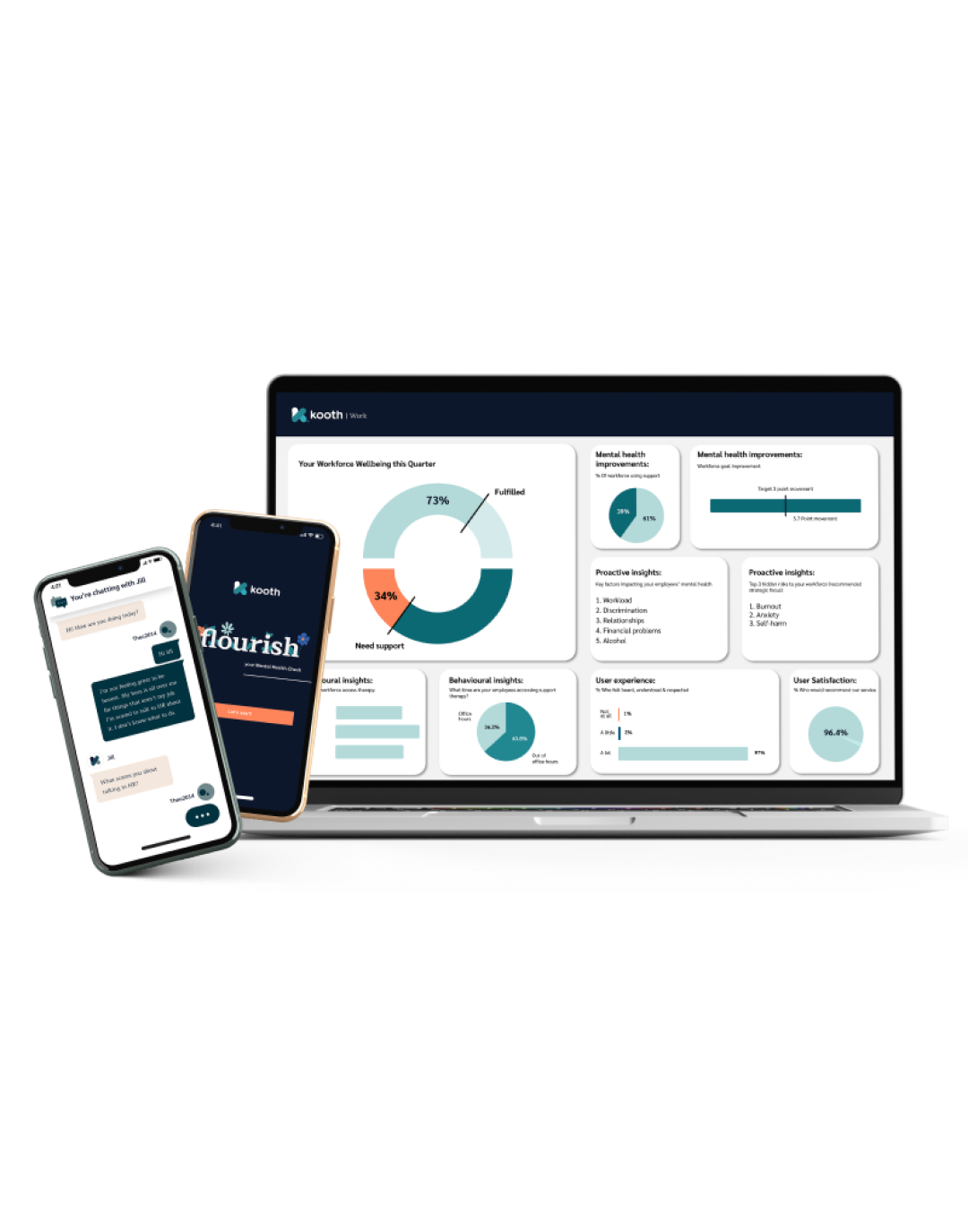We recently delved into the topic of quiet quitting, looking at what it is, who it’s impacting the most, and why it’s happening.
Within that article, we concluded that instead of firing quiet quitters, organisations should be providing the right support, culture, and benefits, where employees don’t end up reaching a stage where they have fallen into quiet quitting.
How can you do this within your organisation?
6 actions business leaders can take
Here are our steps that HR teams and wellbeing leaders can take to promote a culture of wellbeing.
1. Collect feedback
Quiet quitting ultimately results from dissatisfaction, where needs aren’t being met. To understand where changes need to be made, it’s imperative that you know what is actually going on for your workforce, rather than assuming. What are the underlying issues that nobody is talking about? How do employees really feel about their workload? What other challenges are people facing outside of work? Why is working flexibly better for some people?
These questions get answered with data and feedback. You could consider collecting anonymous data insights using surveys - like Flourish - that ask anonymous questions around work and mental health. You might also want to provide frequent feedback sessions, where staff can raise points for executive teams to discuss. It’s also crucial that managers have regular, one-to-one meetings with their team members, getting to know each person as an individual.
Speaking to us in our newest guide, “next level leadership for managing change”, Angela Kravets, chief people officer at Kooth, says:
“By collecting data on the mental health of your workforce and regularly conducting feedback sessions and anonymous surveys, as HR, you can be much more informed about the underlying concerns. This data can help develop precise and targeted strategies, identifying where leaders may need to be upskilled and what information leaders need to know to be able to fully support their teams. Data can also help identify how effective initiatives are, monitoring uptake, engagement, outcomes, and any presenting issues, all of which provide vital information for HR teams.”
Once you know what is lying beneath the surface and are aware of what is impacting people both in and out of work, you will be in a much better position to understand what your workforce needs to thrive. Crucially, gathering these insights also shows employees that their voice is valued.
2. Ensure basic employee wellbeing needs are met
After identifying what employees are facing and what they need, organisations must do what they can to meet these needs, and be transparent in showing employees they are listening.
This includes providing fair pay, safe working conditions, and a quality supervisor, as well as recognition, opportunities, and autonomy.
Read our full article on the psychology behind employee needs and how to fulfil them.
It’s hard for employees to give their all at work if they don’t feel they are getting an equal trade off. Employees whose needs are being met are much more likely to be motivated and engaged and less likely to withdraw. These highly engaged businesses have almost 60% less turnover, according to Gallup.
3. Promote (and model) downtime
HR teams and leaders may be used to leading by example with the behaviours and attitudes wanted within their organisation. However, this is especially important when it comes to taking time off.
Managers that are seen as never taking annual leave or who are consistently working late, sending weekend emails, and saying yes to more work set a precedence for other staff that this is the expected behaviour. For many, fulfilling this expectation will lead to burnout.
Instead, managers should set clear boundaries and model that it is acceptable and necessary to take time out. Of course, sometimes you may have to go above and beyond in your responsibilities. But let that be the exception, not the rule.
4. Provide a holistic mental health framework of support
Crucial to ensuring that staff feel supported at work is a robust mental health framework that is embedded at every level of the organisation. It’s no longer enough to just have surface level wellness “perks”, or an Employee Assistance Programme. Some workplaces underestimate the role of the organisation when reducing stress, burnout, and other critical factors that influence mental health. This lack of support will lead people to disengage at work, and it is a key reason behind both quiet and loud quitters.
Organisations must be taking a more proactive approach to prevent people from reaching a crisis, ensuring there are a range of options and measures at different levels.
Dr Hannah Wilson, head of clinical governance and clinical psychology lead at Kooth, says in our recent battling burnout guide, “In an ideal world, employers should be taking a stepped care approach to wellbeing, focusing on a variety of preventative and proactive solutions - some which are the responsibility of HR and leaders, and some which should be provided externally by professionals. Organisations should provide this wide ecosystem of support, where employees can choose the best solution for their needs at the time. This helps you intervene sooner, and hopefully prevents employees from getting to the top level of burnout in the first place.”
Within this ecosystem includes training for managers and staff, policies that support wellbeing, a safe and welcoming culture, in person support, and support options for out of hours.
This framework must also include a range of support tools, where employees can choose the help they feel is best for them. Mental health support tools such as Qwell - the digital mental health platform provided by Kooth Work - offers employees a range of options, ranging from self-help resources and articles, to online forums, to 1:1 anonymous chat with a practitioner. Quell can be accessed outside working hours, ensuring that there is always a level of support available to employees.
5. Give employees flexibility
One of the policies that is crucial in a mental health framework is flexible working. In most (but not all) industries, to some degree, this is now a given, thanks to the pandemic. In fact, almost 40% of employees would consider resigning if flexible working was removed.
Trusting employees to figure out how, when, and where they work best, and to design their ideal work-life balance, truly encourages a sustainable work-life balance. Not only are employees likely to be less stressed and overworked, but they are less likely to take time off and resign.
A culture of flexibility is also crucial for ensuring inclusion and equality in the workplace, allowing people to develop ways of working in their roles (and beyond), whilst also attending to anything else in their life.
6. Review workloads
During the pandemic, it was necessary for people to adapt in their workload or role. Almost everyone was taking on new responsibilities as we tackled the unknown.
“We can’t expect people to continue working in the same manner and within old frameworks when the needs, situations, and expectations have changed.”
Harriet Cresswell, talent acquisition partner at Kooth, speaking in our guide to managing the great resignation.
However, now we are through the worst, it is a great time for employers to recalibrate workloads and ensure that responsibilities are equally distributed and fairly compensated.
Putting people first
The past few years especially have taught us that a business is not a business without the people. For employees to be able to give their all and drive an organisation forward, it’s imperative that they are supported, valued, and empowered, as well as fairly compensated and treated. Many people are now realising that their life doesn’t have to be dictated by work, and in response, are needing organisations to shift towards being more human-centred.
On the flip side, organisations that still expect employees to give their everything and revolve life around work - with little in return - are taking a one way ticket to a toxic workplace culture and burnt out employees where quiet quitting (or actually quitting) is the only option.
Organisations that work to implement these steps above will undoubtedly have a happier, more productive, and more sustainable workforce, that is centred around employee wellbeing.
To find out more about how you promote employee wellbeing in the workplace, get in touch with our team today.



